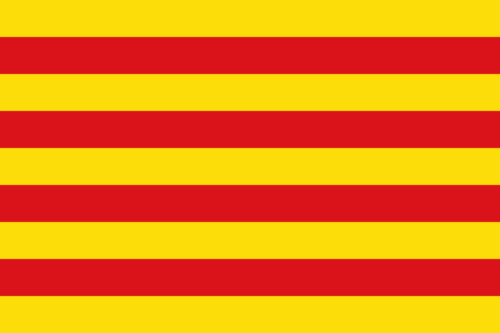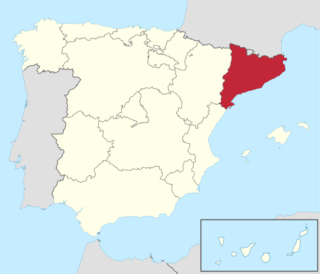Catalonia Independence
In this article, we shall discuss the October 1st, 2017 Catalonia Independence vote that occurred in the Catalan region. We will examine the history of the Catalonia independence, the response by the Spanish government, as well as the most recent Catalan independence referendum. We shall also reflect on the international relations as it relates to the Catalonia region and its independence vote from Spain.
The Catalans live in the Catalonia region of Spain, and make up 7.5 million persons, which is 15 percent of the entire population of Spain (Al Jazeera, 2017). However, 25.6 percent of Spain’s exports come from the Catalonia region. This makes up 19 percent of Spain’s gap, and 20.7 percent of the country’s foreign investment (BBC, 2017).
Catalonia History
In order to understand the 2017 Catalonia referendum, it is important to also discuss the history of Catalonia. The region understood as Catalonia (which not only include the Catalan region of Spain, but also Catalonians in areas such as “Valencia, the Balearic Islands, parts of the Spanish region of Aragon, [and] Roussillon in southeastern France” (Al Jazeera, 2017) is an area that was noted as early as the 1100.
However, the Catalonia region has been a part of the Spanish government for hundreds of years, first beginning with the region being forced to be included within the Bourbon Kingdom of Spain in the year 1714 (Balfour, 2017), and officially in 1716 under the decree known as “the Nueva Plata decree” (Al Jazeera, 2017). However, there were always some that felt that Catalonia had no business being a part of Spain, since those in Catalan see themselves as separate from the Spanish state.
Throughout the later part of the 20th century, Catalonia has gotten increased autonomy. For example, following the establishment of the Republic in 1931, the region of Catalonia was granted more autonomy. This however was short lived during the rule of Francisco Franco. In fact, “During Franco’s rule from 1939-1975, Catalan culture was heavily suppressed. Symbols of Catalan identity such as castells, or human towers, were prohibited and parents were forced to choose Spanish names for their children” (Al Jazeera, 2017). Moreover, the government also disallowed the usage of the Catalan language in the public spaces (Al Jazeera, 2017).
Then, following renewed democracy in the year 1976, the region has been given more freedoms within the Spanish state. Those in Catalonia have also supported staying within a unified Spain; they voted such in 1978 (voting for the Spanish Constitution), along with the “Law of Autonomy” that took place in 1979 (Colin, 2017). The Catalan region has control of its own police, as well as education, along with the ability to dictate its own policies as it relates to social economic matters (such as health, as well as welfare) (Al Jazeera, 2017).
Things changed in 2006, with the rewriting of the autonomy law. It when then that a number of Catalan officials and Catalonian citizens spoke out against new changes. The referendum was passed, but there were many in the Catalonia region that did not partake in the vote (Colin, 2017).
Catalonia Independence Movement
The grassroots organization for Catalonian independence has been quite impressive. In fact, “The strength of the independence movement, on the other hand, rests on its rank and file organisations, made up of Catalanist institutions and voluntary associations, who have been able to mobilise millions of Catalans around the politics of identity, marked by a narrative of national victimisation. The event which proved fundamental to the cause was the judgment in 2010 by the conservative-dominated Spanish Constitutional Tribunal that the new Catalan Statute of Autonomy approved in both the Spanish and Catalan parliaments four years earlier was unconstitutional in some of its clauses, in particular the Preamble which defined Catalonia as a nation. The result is that major social issues of corruption, austerity, economic crisis, and youth unemployment affecting both Spain and Catalonia tend instead to be refracted through a nationalist lens. Yet the uncomfortable fact is that members of the Catalan elites have been caught up in corruption scandals and their political representatives in power have been involved in applying policies of austerity” (Balfour, 2017).
Why Do Catalans Want Independence?
A main reason for Catalonian independence has to do with the distinct Catalan culture and identity, one seen by the people as separate from Spain. They have felt that their–nor their ancestors’ voices have been/were heard. In addition, as mentioned, the Catalonians have faced various discrimination in the country.
One of the other reasons has to do with the economy in Catalonia and its relation to the Spanish economy. The Catalonia region is one of the richest in the entire country of Spain. However, following the major economic crisis in 2008, many in the Catalonia region were upset that the Spanish government in Madrid was taking taxes from Catalonia and using the revenue in other parts of the country (Clarke, Smith-Spark, Cotovio, & Soares, 2017); a concern has been that this richer part of Spain should not be used to help support other parts of the country in an unbalanced way.
At the same time, “the opposition party in the Cortes Generales, Partido Popular, challenged many provisions of the 2006 autonomy law in the Constitutional Court. The law did not go into effect while the case was being considered, and it continued on for several years. While the court deliberated, Catalan separatists held a series of city-level polls on independence. From 2009 through 2010, hundreds of Catalan municipalities held these symbolic votes, including Barcelona. Turnout rates were low, less than 30 percent overall, but support for independence was high, over 90 percent of votes cast” (Collin, 2017).
After the court ruled against these provisions, the government in the Catalan region pushed a resolution so that they could hold a Catalonia independence referendum vote. Furthermore, “[i]n 2012 regional elections, the pro-independence party gained seats, although moderates retained the presidency. A declaration of sovereignty was passed in Catalonia in 2013 and declared unconstitutional in the Constitutional Court. Similarly, the court declared the 2014 non-binding referendum on independence illegal. Consistent with the 2009-10 polling, the 2014 vote had low turnout showing high levels of support for independence” (Collin, 2017).
2017 Catalonia Independence Referendum Vote
In early September 2017, the leaders in the Catalonia region of Spain said that a Catalan independence referendum would be held on October 1st, 2017). The vote was held on October 1st, 2017, despite fierce opposition from Spain.
The Spanish government was completely opposed to the Catalonia independence vote. In fact, “Spain’s Constitutional Court has suspended the vote” (Munoz & Jary, 2017), although it went on despite the wishes of Spain’s government.
The Spanish government tried to find a multitude of ways to prevent the Catalan referendum vote from taking place. As Balfour (2017) notes, “Its latest measure…[in early 2017] [was] to deploy its control of the Liquidity Fund (a central fund designed in 2012 to help the autonomous governments of Spain meet their debts) to try to ensure the Govern cannot budget for the costs of the referendum. It is insisting that the Govern submit a weekly account of expenditure to certify that no money has been earmarked for the referendum. This follows the ruling of the Constitutional Tribunal that the clause in the Catalan budget of March 2017 setting money aside for the administration of the referendum was unconstitutional. Another strong-arm measure it is using is to bring in for police questioning on potential charges of sedition those Catalan politicians most closely identified with the administration of the planned referendum.”
Moreover,”[l]ocal officials have been arrested, mayors have been threatened with investigation for cooperating, and ballots and election materials have been seized. In addition, the website providing information on where and how to vote was blocked, as were voter information tweets from President Puigdemont. Local and federal police have been deployed to keep voters out of voting locations, and three large ships are housing special police off the Catalonian coast, ready to respond to unrest over the weekend” (Colin, 2017). Furthermore, “Courts and police have been cracking down for days to halt the vote, confiscating 10 million paper ballots and arresting key officials involved in the preparations. On Saturday, Civil Guard agents dismantled the technology to connect voting stations, count the votes and vote online, leading the Spanish government to announce that holding the referendum would be “impossible”” (Munoz & Jary, 2017).
Spanish police also attempted to disrupt the Catalan independence referendum. As it was reported, “Spanish riot police smashed their way into polling stations to try to halt a disputed independence referendum on Sunday and fired rubber projectiles at protesters outside a Barcelona polling station. Several people were wounded in the confrontation. The officers fired the projectiles while trying to clear protesters who were trying to impede National Police cars from leaving after police confiscated ballot boxes from the voting center. The Spanish government has ordered police to stop the voting process, saying it’s illegal” (Munoz & Jary, 2017). In fact, in a later October 1st, 2017 report, it said that over 800 people are hurt following police actions to stop the voting (Cotovio, Soares, & Clarke, 2017).
The violence between the Spanish forces and the citizens broke out shortly after the Catalonia independence vote began.
It has been argued that these violent actions by the Spanish police only pushed people even closer to the Catalonia independence movement. It was expected that people who were once either unsure or not fully supportive of leaving Spain may be staring to wonder how authorities can behave this way (The Guardian Opinion, 2017).
Again, the vote took place, Carles Puidgemont, the Catalan leader, said that the region won the ability to declare themselves a separate state from Spain (BBC, 2017). In a speech following the Catalonian independence vote, Puidgemeont was quoted as saying “With this day of hope and suffering, the citizens of Catalonia have won the right to an independent state in the form of a republic.” He also said that “The Spanish government has today written a shameful page in its relationship with Catalonia” (The Guardian, 2017).
Plan for Catalonian Independence
One of the questions that has been asked with regards to the independence vote in Catalonia, or in other countries like the Kurds in Iraq, for that matter, is whether those holding the referendum have a plan in place to execute an actual independence from Spain (or for the Kurdish referendum in Iraq). The regional government of Catalonia had an emergency meeting after the votes to figure out actions moving forward (Jones, 2017).
Among the challenges is whether the Catalonia region would continue to be a part of the European Union, and thus receive all of the economic benefits associated with membership in that international organization. Balfour (2017) writes that the Catalonian leadership “makes the overt assumption that it can remain a member of the EU. Yet the response of EU leaders such as the President of the Commission Jean-Claude Juncker, has not been encouraging. If an independent Catalonia finds itself outside the EU, any application to join would require the consent of all member states and the opposition of Spain would be sufficient to block admission.”
Again, it will be interesting to see the international relations between Catalonia and Spain (if Catalonia officially breaks away), as well as the international relations between Catalonia and the European Union, as well as other countries in the world.




